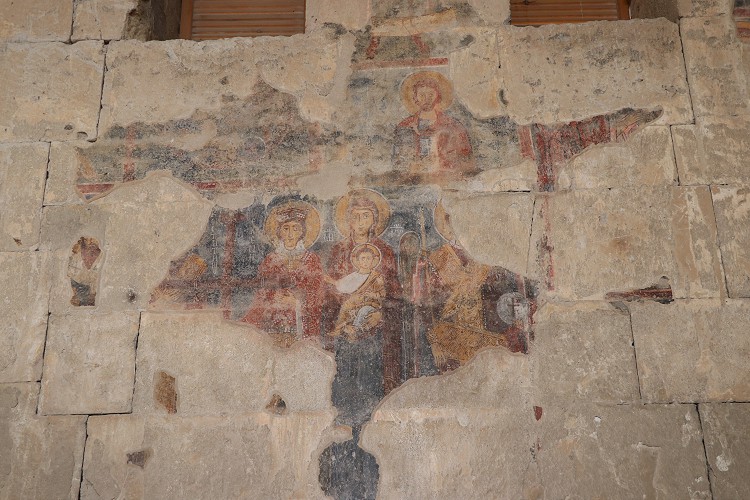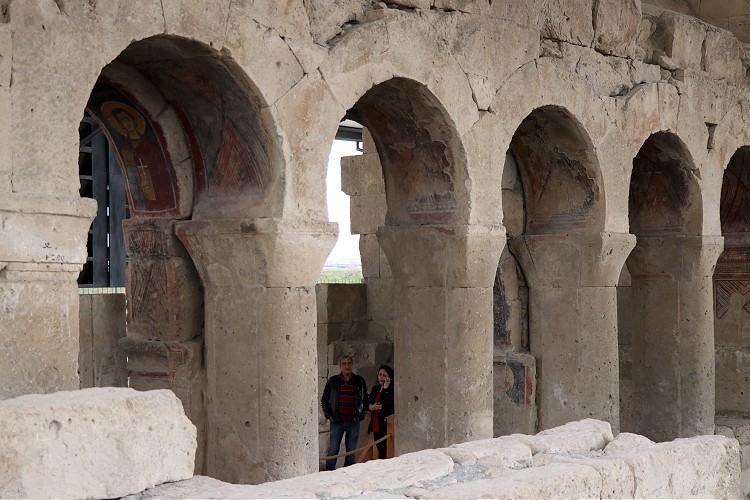Andaval (Constantine and Helena) Church is a structure located today in Aktaş town (historically known as Andabalis), which is part of Niğde province center. It is situated approximately 8 km northeast of the city center, near the Kayseri-Niğde highway and railway route. The site where the church is located has also been inhabited since late antiquity and has historically been a settlement at the crossroads of important routes. This place is on the Istanbul-Jerusalem route, one of Christianity's important pilgrimage routes. With its strategic location, Andaval Church has become an important stop both religiously and socially throughout history.
Dating and Architectural Features
Constantine and Helena Church is dated to the Early Byzantine period, specifically the 5th and 6th centuries, based on its architectural plan and decorative details. The church's name comes from Helena, the first Augusta (empress) to accept Christianity. According to legends, this church is one of the structures built by Saint Helena during her pilgrimage to Jerusalem. Cross motifs and fresco remnants are found on its walls; light-colored, smoothly cut stones were used in its architectural structure. Engraved figures were observed on its exterior facade, and frescoes in its interior. The structure, unused for many years, largely survived until the 20th century; it later functioned as a cold storage facility for a period, but suffered significant damage during this time. Excavation work, which began in 1996, intensified between 2000 and 2003.

Andaval Church (Anadolu Ajansı)
Archaeological Findings and Tomb Typology
Archaeological excavations carried out in and around the church revealed a total of 126 graves, and the remains of 166 individuals from these graves were examined. A large portion of these individuals consisted of fetuses, infants, children, and adolescents (62%). This high rate indicates that the church's location on a pilgrimage route and the difficulties of travel led to high mortality rates, especially among younger age groups. Seven different tomb types were identified as a result of the excavations.
Monolithic Tomb: Oval-shaped tombs carved from a single piece of stone.
Rubble Stone Cist Tomb: Cist tombs formed with roughly hewn stones.
Ashlar Cist Tomb: Cist tombs formed with neatly cut stone courses.
Simple Earth Grave: A simple grave structure dug into the earth.
Rock-Cut Tomb: Deep burials created by carving into the main rock.
Sarcophagus Tomb: Structures with four sides enclosed by stone blocks and a stone lid.
Composite Tomb: Mixed-type tombs assembled from different structural elements.

Andaval Church (Anadolu Ajansı)
Burial Rituals and Social Structure
All burials were laid supine, with their heads facing west and feet facing east. This orientation symbolizes the belief in resurrection. Arms were typically crossed over the chest or abdomen. Graves are in the form of single and multiple burials; however, the majority are single burials (76%). Analyses of grave goods revealed that only 33% of individuals' graves contained findings. Among the findings, personal ornaments such as glass and metal bracelets, rings, necklaces, earrings, cross reliquaries, and seashells were prominent. No ceramic vessels or weapons were found. Most of the gifts were found in women's and children's graves. Composite tombs were the type of tomb where the most findings were encountered.
Health Status and Causes of Death
Diseases such as Cribra Orbitalia and Porotic Hyperostosis were found in the skeletons, but generally very few traces of trauma were observed. This situation indicates that individuals experienced rapid deaths that left no skeletal trace. This finding suggests the impact of major epidemic diseases like plague that affected the Byzantine geography. The high mortality rate, especially among infants and children, is associated with low immunity, malnutrition, and an itinerant lifestyle.


